TLBoehnke
Registered
My first dive trip report for this website. I’ve read so many helpful dive trip reports in the past 25 tears and figured it was my turn to pay back this group with a report on this little island. The locals simply refer to the island as ‘Statia’. It is located between Saba to the north and St. Kitts to the south.
General Island Description:
After Christopher Columbus sited the island in 1493, the island changed hands at least 22 times among the British, French and Dutch. In 1636, the Dutch took possession and made St. Eustatius a duty-free island in 1756. This free port status, its naturally deep harbor, and the perfect geographic location between Europe and America, made St. Eustatius (Statia) one of the busiest ports in the world. Over 3,000 merchant ships visited Statia between 1775 and 1800, and on any given day, there were more than 300 ships anchored offshore. At that time, the tiny island supported over 20,000 people and earned its title, ‘The Golden Rock’. The island is much less inhabited now. The wooden ships that sank offshore during storms helped create the foundation for many coral and sponge formations for divers to enjoy now. When you walk around St. Eustatius, you find evidence of the rich past everywhere. The ruins of the oceanfront warehouses are all over Lower town (by the water) and there are several historical places of interest to visit. What you won’t find are crowds or chain businesses. I found the locals to be genuinely approachable, friendly, and helpful.
St. Eustatius’ landscape is dominated by the 2,000-foot tall extinct volcano on the south end of the island, known as The Quill. According to volcanologists, The Quill is one of the most perfectly shaped volcanoes in the world. The Quill, together with Boven at the north side of the island were designated National Parks in 1998 and are managed by Stenapa. When you hike up the Quill, you encounter different vegetation zones, with a highlight of the dense forest in the crater. These two volcanoes’ eruption and lava flows into the ocean created the other unique Caribbean habitat of coral structures growing on ‘rivers’ of lava flow that stand anywhere from 3 feet to 30 feet above the ocean floor.
Getting There:
The only commercial flights to Statia are two per day from St. Maarten (morning and dusk). There is ferry service between St. Kitts, Statia, and Saba; so you can transfer between those islands by boat service. My flight into St. Maarten was not convenient for a quick transfer to a Statia flight, so I decided to stay on St. Maarten for three extra days and explore this very unique and fun island. I then flew to Statia for eight days of secluded, pristine diving.
Dive Operations and Lodging:
There is only one fully operating dive company on the island – Scubaqua Dive Center. Owned and operated by a Dutch couple – Marieke and Mike, it is one of the best dive operations I have experienced and a big reason I was motivated to write this report. Everything you’d consider important about a remote dive operation, they performed extremely well. From safety briefings, listening to diver input, and graphically descriptive dive briefings, to the friendly and helpful nature of the dive masters. They have approximately 12 dive masters who rotate working, depending on how many divers they have. Scuabqua has two dive boats, one that accommodates up to 25 people (including crew) and another smaller boat that can carry up to 15. All the dive sites are just minutes away so they come back after each dive. There were eight divers (plus crew) on the boat during my first four days, and only four of us my last four days. Quiet, personal diving. There is a part-time dive operator on the island – Golden Rock, but they are affiliated with the one ‘posh’ resort higher up on the island and were not operating during the eight days I was diving.
Scubaqua is located on the water and the Old Gin House hotel is directly across the street and is the most convenient lodging for diving and dining. Scubaqua is affiliated with most or all the lodging on the island, so you can arrange your diving and lodging through their representative(s). The Old Gin house has single, hotel-like rooms in back that are ‘okay’ or ‘meh’, but good enough for sleep and washing up for singles. They have a very nice, larger room directly in front with the door facing the road. I was lucky to stay there. There are also specialty suites located on the water and they are large and nicely furnished, with awesome balcony views.
Across from the Old Gin House and conveniently next to Scubaqua are the two main and best restaurant/bars. The Wine House serves superb meals and appetizers, with a beautiful patio overlooking the water. The Old Gin House restaurant, serves up quality and diverse breakfasts, lunches and dinners. These two restaurants sometimes rotate their hours on opening and closing. Some nights they’ll have barbeque or other specials. A few hundred meters’ walk down to the end of the commercial pier, is a large food truck and bar that serves great bar food and drinks – pizza, BBQ, hot sandwiches and hamburgers from lunch until late a night. I had several fun lunches and evenings down there, with all the partying locals. Well lit, and good table accommodations on the waterfront where the ferries come and go. There are a few more small diners and a general store up on the hill in town above the water.
Diving:
With the exception of two large wreck dives, almost all the dive profiles are “descend to bottom at around 50 feet and stay there until time to come up for decompression safety stop”. This flat profile at 50 feet makes it more helpful to dive with Nitrox and Scubaqua encourages it and provides it at no cost.
There are approximately 27 designated dive sites with buoys that the boat attaches to while diving. The dives seemed to vary with current, but usually there was a strong current during descent, so most times we had to hang on to the buoy line while going down in order not to float away. Some of the buoy lines were new and clean, but some had barnacles and I cut my hands a few times. They discourage glove wearing and are very sensitive to the environment, but allow it for this purpose of avoiding hand hazards.
The dive sites seem to be distinctly different in three areas. Sites in the south are all based on lava ‘river’ flows that created the foundation for coral growth. Here you’ll find formations sticking up that are 5 to 25 feet tall, with most having many ledges to look under for critters. These sites have names like Humps, Cliffs, Ledges 1 & 2, and Blocks all good dives. I found most of my time spent looking under ledges. Some occasions we had little or no current and would stay on one site. A couple of times there was strong current so we drifted three of the sites and the boat followed. We were the only divers in the water!
The dive sites located more off the center of the island are in a sandy sea grass area where at 50 feet deep, many 18th century ships were anchored and sunk, and created nice linear coral mounds of 1 to 4 feet tall. The ships are rotted away now, but helped create these unique sites with lots of fauna. What are left are numerous large anchors and thousands of ballast stones that look like large bricks scattered about. There were many wooden ship wrecks on top of one another, so some of these sites have names like Anchor Point, Double Wreck, and Triple Wreck. There are two large modern sunken ships but I’m not a wreck nut, so I only did one modern wreck dive. They were sunk about 25 years ago. These two wrecks are 100 feet dive profiles. Most wreck divers rave about them.
The volcano to the north of the island spewed less hot lava, so instead of lava flows, there are lava boulders of 5 to 30 feet tall scattered around. My favorite dive site for fish and creature abundance/variety is called Aquarium and is an area of large volcanic boulders immediately north of the commercial fuel ship pier. I was not able to dive the other sites up north, due to currents at the time.
I will look forward to returning but will probably divide my time between Statia and Saba, and just transfer via the ferry. They are quite different.
Pros: Stepping back in time to a peaceful, secluded island with personalized diving.
General Island Description:
After Christopher Columbus sited the island in 1493, the island changed hands at least 22 times among the British, French and Dutch. In 1636, the Dutch took possession and made St. Eustatius a duty-free island in 1756. This free port status, its naturally deep harbor, and the perfect geographic location between Europe and America, made St. Eustatius (Statia) one of the busiest ports in the world. Over 3,000 merchant ships visited Statia between 1775 and 1800, and on any given day, there were more than 300 ships anchored offshore. At that time, the tiny island supported over 20,000 people and earned its title, ‘The Golden Rock’. The island is much less inhabited now. The wooden ships that sank offshore during storms helped create the foundation for many coral and sponge formations for divers to enjoy now. When you walk around St. Eustatius, you find evidence of the rich past everywhere. The ruins of the oceanfront warehouses are all over Lower town (by the water) and there are several historical places of interest to visit. What you won’t find are crowds or chain businesses. I found the locals to be genuinely approachable, friendly, and helpful.
St. Eustatius’ landscape is dominated by the 2,000-foot tall extinct volcano on the south end of the island, known as The Quill. According to volcanologists, The Quill is one of the most perfectly shaped volcanoes in the world. The Quill, together with Boven at the north side of the island were designated National Parks in 1998 and are managed by Stenapa. When you hike up the Quill, you encounter different vegetation zones, with a highlight of the dense forest in the crater. These two volcanoes’ eruption and lava flows into the ocean created the other unique Caribbean habitat of coral structures growing on ‘rivers’ of lava flow that stand anywhere from 3 feet to 30 feet above the ocean floor.
Getting There:
The only commercial flights to Statia are two per day from St. Maarten (morning and dusk). There is ferry service between St. Kitts, Statia, and Saba; so you can transfer between those islands by boat service. My flight into St. Maarten was not convenient for a quick transfer to a Statia flight, so I decided to stay on St. Maarten for three extra days and explore this very unique and fun island. I then flew to Statia for eight days of secluded, pristine diving.
Dive Operations and Lodging:
There is only one fully operating dive company on the island – Scubaqua Dive Center. Owned and operated by a Dutch couple – Marieke and Mike, it is one of the best dive operations I have experienced and a big reason I was motivated to write this report. Everything you’d consider important about a remote dive operation, they performed extremely well. From safety briefings, listening to diver input, and graphically descriptive dive briefings, to the friendly and helpful nature of the dive masters. They have approximately 12 dive masters who rotate working, depending on how many divers they have. Scuabqua has two dive boats, one that accommodates up to 25 people (including crew) and another smaller boat that can carry up to 15. All the dive sites are just minutes away so they come back after each dive. There were eight divers (plus crew) on the boat during my first four days, and only four of us my last four days. Quiet, personal diving. There is a part-time dive operator on the island – Golden Rock, but they are affiliated with the one ‘posh’ resort higher up on the island and were not operating during the eight days I was diving.
Scubaqua is located on the water and the Old Gin House hotel is directly across the street and is the most convenient lodging for diving and dining. Scubaqua is affiliated with most or all the lodging on the island, so you can arrange your diving and lodging through their representative(s). The Old Gin house has single, hotel-like rooms in back that are ‘okay’ or ‘meh’, but good enough for sleep and washing up for singles. They have a very nice, larger room directly in front with the door facing the road. I was lucky to stay there. There are also specialty suites located on the water and they are large and nicely furnished, with awesome balcony views.
Across from the Old Gin House and conveniently next to Scubaqua are the two main and best restaurant/bars. The Wine House serves superb meals and appetizers, with a beautiful patio overlooking the water. The Old Gin House restaurant, serves up quality and diverse breakfasts, lunches and dinners. These two restaurants sometimes rotate their hours on opening and closing. Some nights they’ll have barbeque or other specials. A few hundred meters’ walk down to the end of the commercial pier, is a large food truck and bar that serves great bar food and drinks – pizza, BBQ, hot sandwiches and hamburgers from lunch until late a night. I had several fun lunches and evenings down there, with all the partying locals. Well lit, and good table accommodations on the waterfront where the ferries come and go. There are a few more small diners and a general store up on the hill in town above the water.
Diving:
With the exception of two large wreck dives, almost all the dive profiles are “descend to bottom at around 50 feet and stay there until time to come up for decompression safety stop”. This flat profile at 50 feet makes it more helpful to dive with Nitrox and Scubaqua encourages it and provides it at no cost.
There are approximately 27 designated dive sites with buoys that the boat attaches to while diving. The dives seemed to vary with current, but usually there was a strong current during descent, so most times we had to hang on to the buoy line while going down in order not to float away. Some of the buoy lines were new and clean, but some had barnacles and I cut my hands a few times. They discourage glove wearing and are very sensitive to the environment, but allow it for this purpose of avoiding hand hazards.
The dive sites seem to be distinctly different in three areas. Sites in the south are all based on lava ‘river’ flows that created the foundation for coral growth. Here you’ll find formations sticking up that are 5 to 25 feet tall, with most having many ledges to look under for critters. These sites have names like Humps, Cliffs, Ledges 1 & 2, and Blocks all good dives. I found most of my time spent looking under ledges. Some occasions we had little or no current and would stay on one site. A couple of times there was strong current so we drifted three of the sites and the boat followed. We were the only divers in the water!
The dive sites located more off the center of the island are in a sandy sea grass area where at 50 feet deep, many 18th century ships were anchored and sunk, and created nice linear coral mounds of 1 to 4 feet tall. The ships are rotted away now, but helped create these unique sites with lots of fauna. What are left are numerous large anchors and thousands of ballast stones that look like large bricks scattered about. There were many wooden ship wrecks on top of one another, so some of these sites have names like Anchor Point, Double Wreck, and Triple Wreck. There are two large modern sunken ships but I’m not a wreck nut, so I only did one modern wreck dive. They were sunk about 25 years ago. These two wrecks are 100 feet dive profiles. Most wreck divers rave about them.
The volcano to the north of the island spewed less hot lava, so instead of lava flows, there are lava boulders of 5 to 30 feet tall scattered around. My favorite dive site for fish and creature abundance/variety is called Aquarium and is an area of large volcanic boulders immediately north of the commercial fuel ship pier. I was not able to dive the other sites up north, due to currents at the time.
I will look forward to returning but will probably divide my time between Statia and Saba, and just transfer via the ferry. They are quite different.
Pros: Stepping back in time to a peaceful, secluded island with personalized diving.
- Pristine fauna and flora. Dive sites probably not dived on more that twice a week by small groups.
- Wreck dives.
- Lots of juvenile fish (e.g., trunk fish) and mature drumfish. Huge yellowline arrow crabs were ubiquitous. Many squid, eels and coneys, spanish hogfish, along with the standard varieties of fish and creatures.
- Lots of history below and above the island.
- A wonderful dive operation with friendly staff that treat you like family.
- Dive Masters are not bossy, rather helpful and guiding while letting you do your own profile of interest.
- Pre-produced, visual dive description posters for dive briefings.
- Outstanding food served for such a tiny place.
- Very convenient lodging and diving in one place. Sure don’t need a car!
- The only beach on the island is a small, 60 feet wide spit immediately adjacent to Scubaqua. Not only can you recreate there, but it is also their hawksbill turtle nesting area. I had the privilege to witness them retrieving the baby turtles to return to the ocean.
- No large fish.
- No large coral structures like swim-throughs. Coral is pristine but not large structures.
- Hard to get to but I always say “that the harder to get to, the better the diving”.
- Having to usually use the buoy line to descend and sometimes some nasty barnacles on less visited sites.
Attachments
-
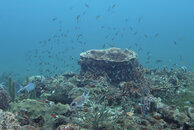 IMG_5488.jpg127.3 KB · Views: 248
IMG_5488.jpg127.3 KB · Views: 248 -
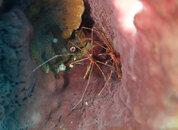 IMG_5493.jpg100.9 KB · Views: 215
IMG_5493.jpg100.9 KB · Views: 215 -
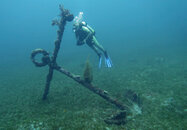 IMG_5503.jpg85.9 KB · Views: 226
IMG_5503.jpg85.9 KB · Views: 226 -
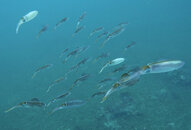 IMG_5527.jpg60.6 KB · Views: 211
IMG_5527.jpg60.6 KB · Views: 211 -
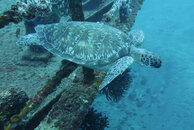 IMG_5671.jpg135.8 KB · Views: 220
IMG_5671.jpg135.8 KB · Views: 220 -
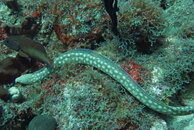 IMG_5727.jpg207.9 KB · Views: 216
IMG_5727.jpg207.9 KB · Views: 216 -
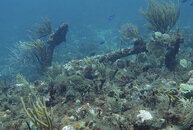 IMG_5780.jpg163.7 KB · Views: 221
IMG_5780.jpg163.7 KB · Views: 221 -
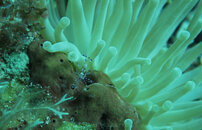 IMG_5902.jpg107.8 KB · Views: 208
IMG_5902.jpg107.8 KB · Views: 208 -
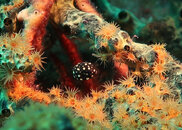 IMG_5974.jpg164.6 KB · Views: 219
IMG_5974.jpg164.6 KB · Views: 219 -
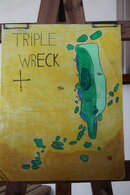 IMG_6041.jpg75.8 KB · Views: 231
IMG_6041.jpg75.8 KB · Views: 231 -
 IMG_6804.jpg186.2 KB · Views: 217
IMG_6804.jpg186.2 KB · Views: 217 -
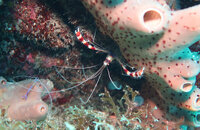 IMG_6388.jpg141.3 KB · Views: 229
IMG_6388.jpg141.3 KB · Views: 229 -
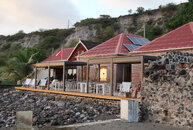 IMG_6621.jpg160.7 KB · Views: 229
IMG_6621.jpg160.7 KB · Views: 229 -
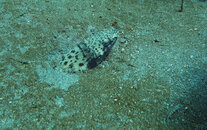 IMG_6693.jpg220.7 KB · Views: 222
IMG_6693.jpg220.7 KB · Views: 222 -
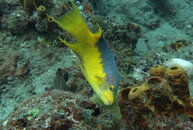 IMG_6756.jpg164.1 KB · Views: 226
IMG_6756.jpg164.1 KB · Views: 226



